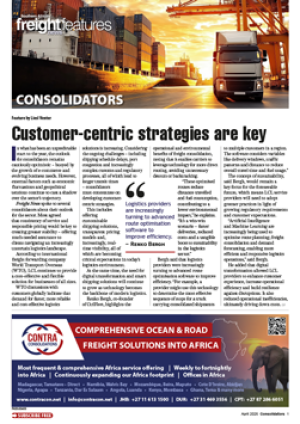Metals markets are expected to remain volatile for the foreseeable future, according to James Whiteside, head of corporate, metals & mining at Wood Ma cken z ie.Copper prices are projected to rise significantly, reaching $9 000 per tonne, while aluminium is also expected to strengthen. Zinc prices are likely to spike in early 2025 due to smelting cutbacks before stabilising. Meanwhile, nickel prices will remain high as Indonesia continues to expand production.“The road ahead presents both opportunities and risks,” said Whiteside. “Base metals are poised for long-term growth, but industry players must prepare for ongoing volatility. Africa, with its vast resources and growing investment potential, has a critical role to play in shaping the future of global mining.”He said that timely investment in the right resources was crucial for the continent’s mining sector. “Graphite, for example, is experiencing increased substitution with synthetic alternatives, leading to a decline in demand. In the cobalt sector, synthetic materials are also making an impact, though not to the same extent as graphite. As for thermal coal, we anticipated peak demand in 2023. While iron ore and metallurgical coal saw growth in seaborne markets in 2024, China’s planned cutbacks on lower-grade materials in 2025 suggest a different trajectory moving forward.”According to Whiteside, a rapid depletion in zinc supply is expected, along with shortages in copper, neodymium and lithium. He stressed the urgent need for new investment in copper, zinc, lithium and graphite, highlighting that the long lead times for mining projects would make it challenging to meet future demand targets. This was even more concerning given that industry capital expenditure (capex) was currently significantly below previous cycles.“Less capital-intensive commodities are now the focus, with major players no longer leading investment. Since 2021, there has been a noticeable decline in investment, exacerbated by inf lation, project delays and rescoping, leading to critical projects being pushed out. This lack of investment is particularly evident in key commodities such as copper and lithium, which are already under significant pressure. Copper remains severely underinvested relative to net-zero requirements, while rising lithium capex suggests a potential moderation in supply growth.”According to Whiteside, there are projects in the pipeline that could help bridge the gap, but mining houses have delayed final investment decisions on most of the major projects.“Many major mining companies are expanding exploration projects into Africa, but many remain unsanctioned despite being in the pipeline for years. These projects are essential, yet there is potential for constraints on development. In 2024, direct capital expenditure in Africa stood at 14%.”He said on the positive side, reinvestment rates were on the rise, indicating growing corporate confidence. “However, capital discipline remains entrenched in financial frameworks, with budgets forcing projects to compete for funding. Companies are beginning to move away from the trend of reinvesting below 30–50% of operating cash f lows into new projects. For example, Rio Tinto has increased its capital budget to $11 billion this year.” LV

